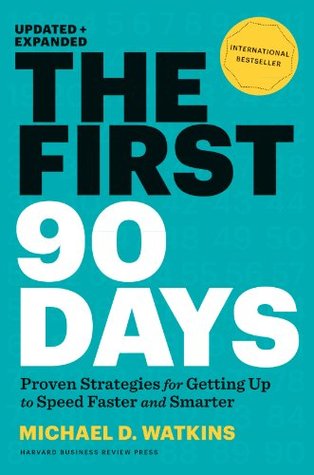More on this book
Community
Kindle Notes & Highlights
Started reading
May 28, 2022
“success or failure during the first few months is a strong predictor of overall success or failure in the job.”
The typical leader had been promoted 4.1 times, moved between business functions (such as from sales to marketing) 1.8 times, joined a new company 3.5 times, moved between business units in the same company 1.9 times, and moved geographically 2.2 times. This totals 13.5 major transitions per leader, or one every 1.3 years.
Your goal in every transition is to get as rapidly as possible to the break-even point.
new leaders are net consumers of value early on; as they learn and begin to take action, they begin to create value. From the break-even point onward, they are (one hopes) net contributors of value to their organizations.
to reach the break-even point, the average of their responses was 6.2 months.
success in the new role requires you to stop doing some things and to embrace new competencies.
The virtuous cycle of transitions
To be successful, you need to mobilize the energy of many others in your organization.
Transition failures happen because new leaders either misunderstand the essential demands of the situation or lack the skill and flexibility to adapt to them.
In the first few weeks, you need to identify opportunities to build personal credibility. In the first 90 days, you need to identify ways to create value and improve business results that will help you get to the break-even point more rapidly.
Every new leader needs to quickly become familiar with the new organization, secure early wins, and build supportive coalitions.
You can exist in a state of denial, believing that because you’re being efficient, you’re being effective. You may keep believing this until the moment the walls come crashing down around you.
you build a team of competent people whom you trust, you establish goals and metrics to monitor their progress, you translate higher-level goals into specific responsibilities for your direct reports, and you reinforce them through process.
Decision making becomes more political—less about authority, and more about influence.
First, the issues you’re dealing with become much more complex and ambiguous when you move up a level—and your ability to identify “right” answers based solely on data and analysis declines correspondingly.
you were promoted because you are able and driven; the same is true for everyone around you.
To overcome these barriers and succeed in joining a new company, you should focus on four pillars of effective onboarding: business orientation, stakeholder connection, alignment of expectations, and cultural adaptation.
Remember: you don’t want to be meeting your neighbors for the first time in the middle of the night when your house is burning down.
What is culture? It’s a set of consistent patterns people follow for communicating, thinking, and acting, all grounded in their shared assumptions and values.
Assessment of problem preferences
Relearning how to learn can be stressful.
A baseline question you always should ask is, “How did we get to this point?” Otherwise, you risk tearing down existing structures or processes without knowing why they were put there in the first place.
How do customers—external or internal—perceive your organization? How do your best customers assess your products or services? How about your customer service? If your customers are external, how do they rank your company against your competitors?
Frontline R&D and operations. These are the people who develop and manufacture your products or deliver your services. Frontline people can familiarize you with the organization’s basic processes and its relationships with key external constituencies. They can also shed light on how the rest of the organization supports or undermines efforts on the front line.
Natural historians. Keep an eye out for “old-timers” or natural historians—people who have been with the organization for a long time and who naturally absorb its history. From these people, you can learn about the company’s mythology (key stories about how the organization came to be and trials it has gone through) and the roots of its culture and politics.
Ask them essentially the same five questions: What are the biggest challenges the organization is facing (or will face in the near future)? Why is the organization facing (or going to face) these challenges? What are the most promising unexploited opportunities for growth? What would need to happen for the organization to exploit the potential of these opportunities? If you were me, what would you focus attention on?
If you’re meeting with salespeople, for example, consider asking, What do our customers want that they’re getting from our competitors and not getting from us?


